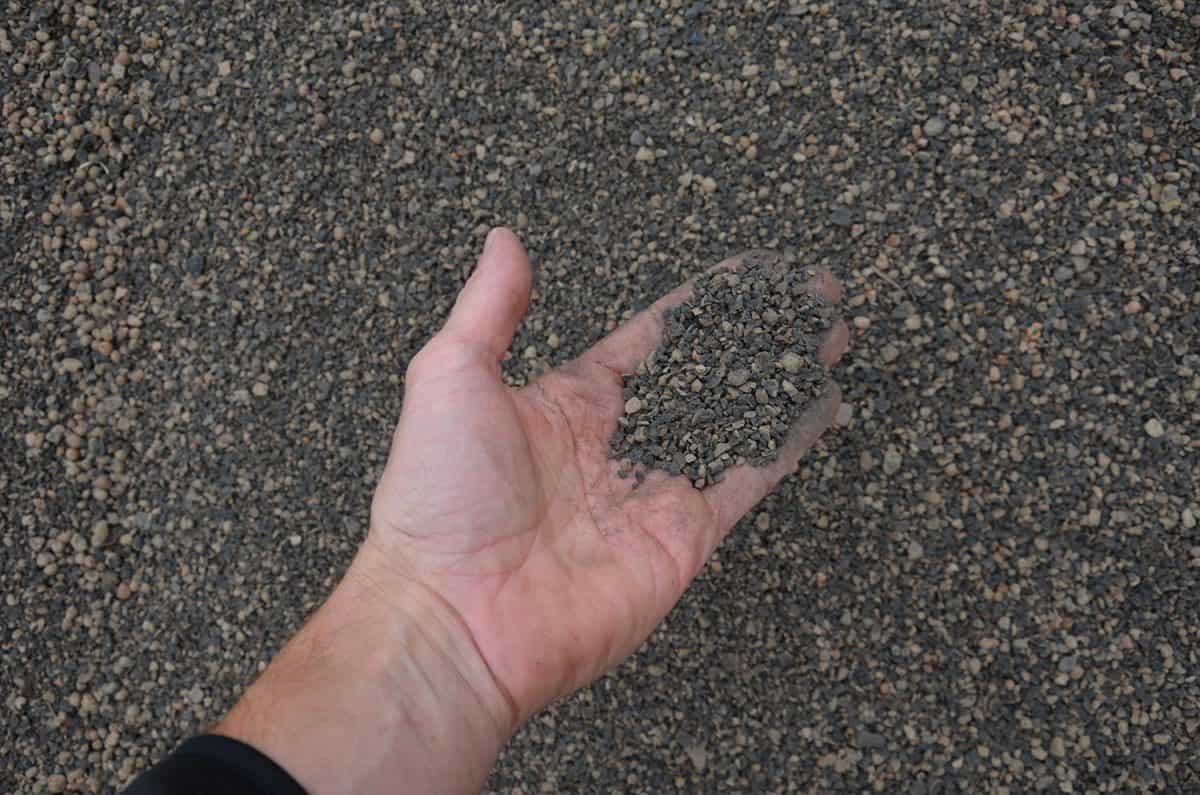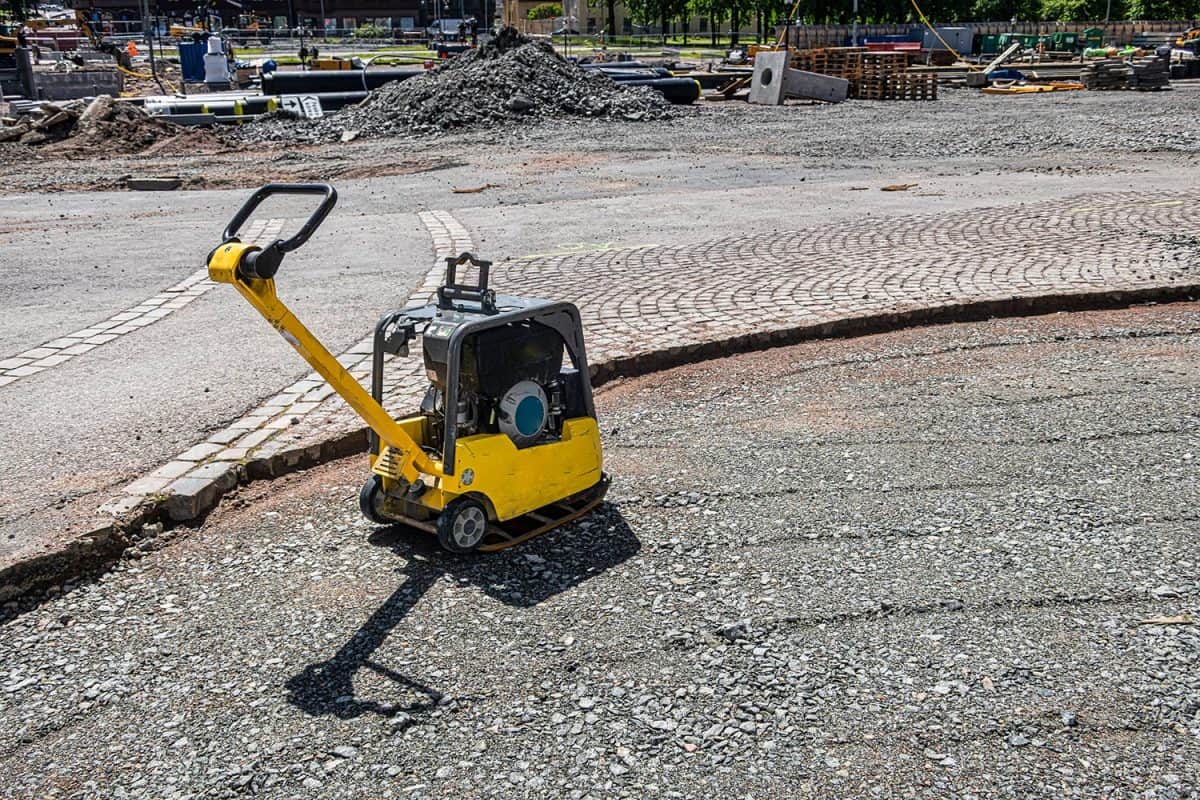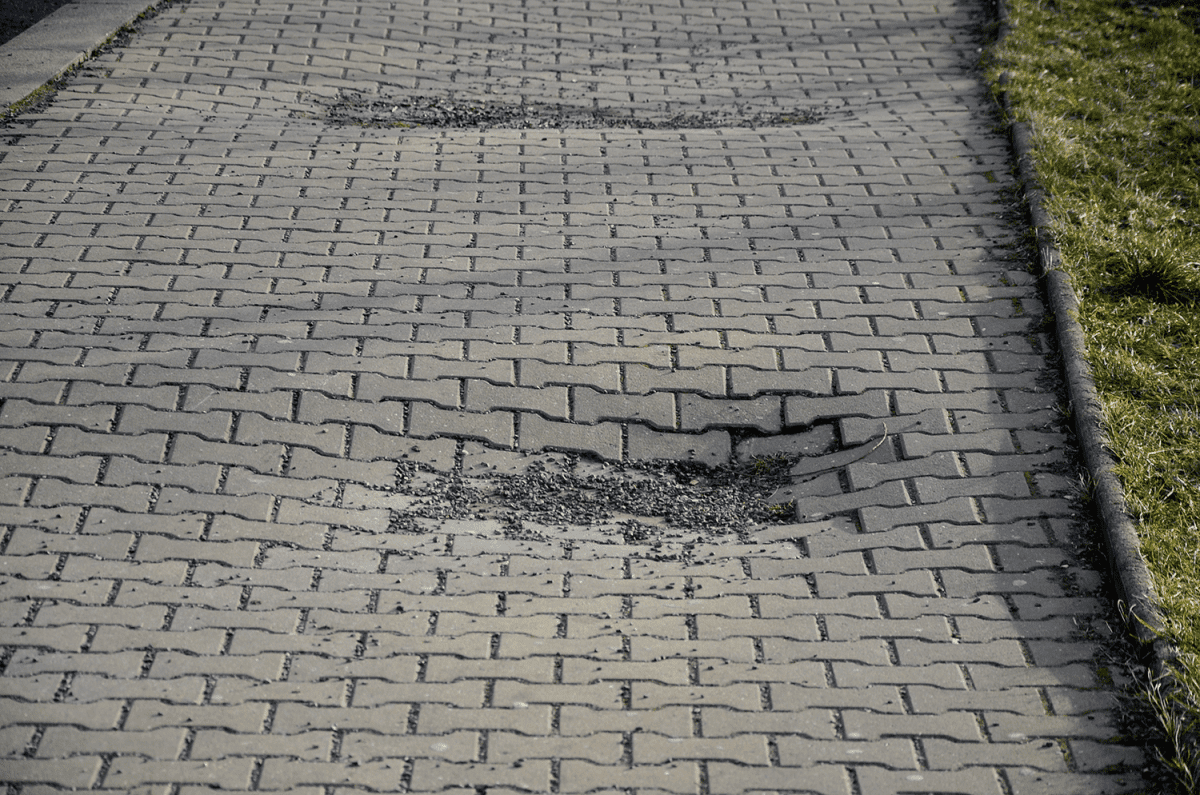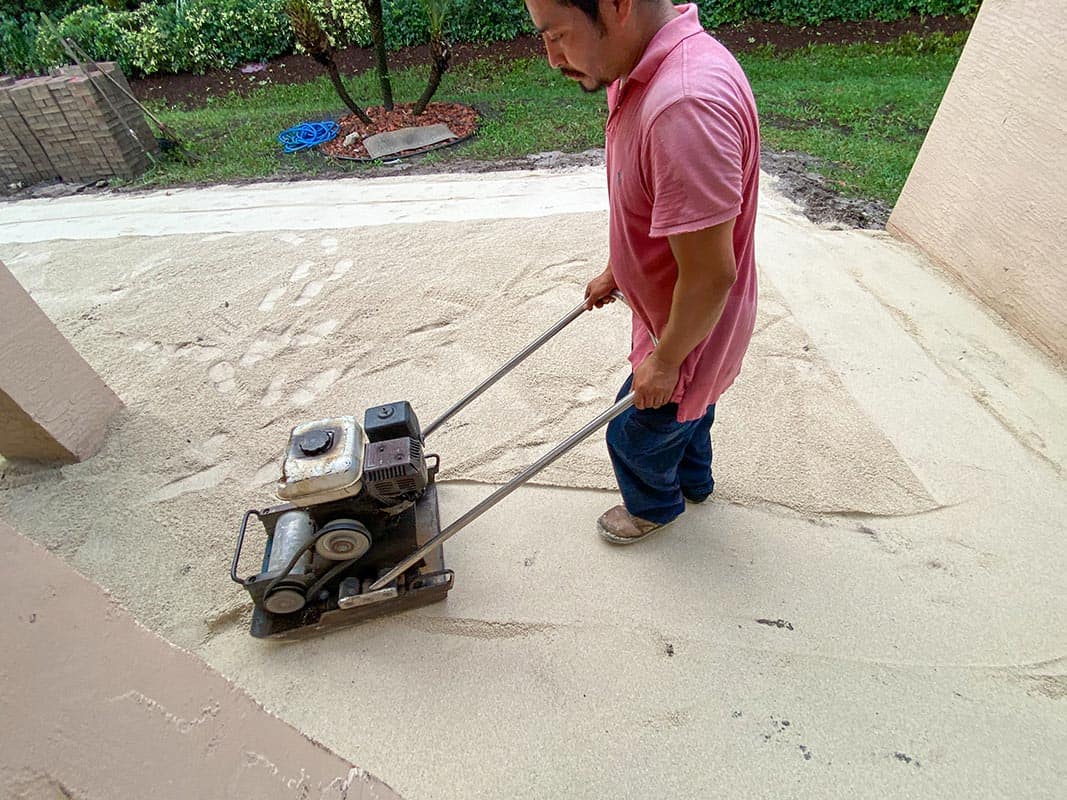Disclosure: We may get commissions for purchases made through links in this post.
When choosing the materials that you'll be using for your hardscaping project at home, you need to be informed about their qualities to know if they will be effective for the job they're supposed to do. Compacting is crucial to achieving a flat and firm base for your patio. If your paving material cannot do this, it would result in a disaster. So in this article, let's find out if stone dust can be compacted and how to achieve it with the help of our experts.
Stone dust can be compacted by leveling it on the foundation using an aluminum bar or a straight piece of wood. Once the pavers have been installed on top of the stone dust bed, use a vibrating plate to compact the bed and pavers even more. However, note that stone dust doesn't compact well due to its powdery texture. It can cause shifting of the pavers later on which is why it's not really recommended to use this for your installation bed.
Keep reading so we can tell you more about stone dust and why it isn't necessarily the best choice for your base material. We'll talk about the different problems that can arise when you use stone dust particularly when it gets wet. We'll also provide information on whether stone dust is better than sand. Let's get down to business!
![Worker uses vibratory plate compactor, Does Stone Dust Compact? [And How To Do It]](https://pavingplatform.com/wp-content/uploads/2022/03/Does-Stone-Dust-Compact-And-How-To-Do-It-800x1200.png)
Can stone dust be compacted?
Grit or quarry dust is commonly used as a setting bed for stone and concrete pavers in residential landscapes. It is strong, durable, and capable of providing the support that these pavers need. It is also very affordable since it is just a by-product of processing gravel.

But for it to become an effective base for your pavement, stone dust needs to be compacted. This means that it should be flattened so it can provide a firm bed where your stone or concrete pavers will rest on.
Finding out if stone dust can be compacted is a good step to ensuring that you'll have a high-quality hardscape installed in your property and that your investment won't go to waste.
Unfortunately, stone dust does not compact well due to its powdery nature - meaning it's not all that stable. Because of this, it isn't the best choice for your paving project. It is often associated with shifting issues which can be problematic on your pavement.
But should you proceed to use this material for your installation bed, you would need to put about one inch of stone dust on top of your foundation.
Level it with the use of an aluminum bar or a straight piece of wood to create a flat surface before you lay your stone or concrete pavers. Once the pavers have been installed, you need to use a vibrating plate so that the stone dust underneath will be compacted some more.
Why is compacting necessary?

Compacting is a crucial step in the preparation of your hardscaping project. You smoothen, flatten, and make the particles intact. They form the installation bed of your pavement. These are just some of the problems that can occur when the base isn't properly compacted.
Uneven Surface

If they aren't compact, you'll have an uneven and bumpy bed and you can already picture what will happen to your pavers. Yes, they'll also be uneven and bumpy. This is because the interlocking pavers mimic their base.
Compression
If you have an improperly compacted base underneath your driveway, it could lead to compression. The vehicles' weight will be too much to bear and there will be grooves on the surface. Not only is this unattractive, it can also cause accidents.
Displacement
This happens when water settles in between different portions of the interior of your pavement. This water will eventually freeze during winter and will expand which will cause the pavers to shift in their position.
Then, when the weather gets warmer, water will thaw and the space will contract this time causing the pavers to settle unevenly on the ground.
A bed that isn't compacted properly will result in pavement failure. There will be constant shifting which would only lead to more problems later on.
There will be cracks, pest infestation, moisture problems, and many more. The pavement will not only be an eyesore but it would also spell disaster for its users.
What happens when stone dust gets wet?
Another inherent property of stone dust is that it is non-porous. As such, it isn't able to drain the water well when it gets wet. If ever it allows water to pass through, it will be a very slow process. Water will just sit on top of stone dust and right underneath the installed concrete or stone pavers.
These are the possible issues that could arise when stone dust gets wet.
Disintegration
Since water doesn't drain well, the underside of your pavers is continuously soaked in water. This will weaken this portion of your pavers and will eventually lead to disintegration until it compromises the structural integrity of your pavement.
When repairs need to be done, you would need to buy and install new pavers because the old ones are already ruined.
Shifting
When there's water underneath your pavers, it will be affected by freezing and thawing cycles as the weather changes. Water expands as it freezes and will cause movement in your pavers.
Meanwhile, everything will contract when the frozen water thaws which will result in the settling of the concrete or stone pavers.
The constant movement of the ground will cause displacement and an uneven surface.
Efflorescence
This refers to the formation of salt deposits as water sits on the stone dust bed's surface for a long time. Eventually, there would also be efflorescence on the paver's surface which will affect its appearance.
These are just some of the water-related problems that you may encounter in your patios, walkways, or driveways due to poor drainage of stone dust.
Is stone dust better than sand?
At this point, you should have already realized why experts don't recommend the use of stone dust underneath your pavers. It will cause the shifting and settling of the pavement. Poor drainage will weaken the pavers and affect their structural integrity and appearance.
Sand is considered a better alternative for your installation bed. But it has to be the right kind of sand. You should opt for concrete sand.
Concrete sand has a coarse texture that allows it to drain water properly. It can also be compacted easily either by the use of hand or a mechanical compactor.

Once it gets wet, concrete sand can also fill the joints in between pavers and help lock them in place. Concrete sand also allows flexibility so there can be movement on the ground but there won't be any displacement or cracking that can destroy the pavement.
Final Thoughts
Stone dust doesn't belong underneath your patio, walkway, or driveway. It isn't a good base material as it cannot be compacted effectively and doesn't drain water properly. The use of stone dust will only result in a poor-quality pavement that'll give you headaches regarding repairs that need to be done sooner rather than later.
To know more about pavement materials, you may visit the following links:

![Vibrant Red Paver Stone Path, Can You Spray Paver Sealer? [How To Apply It]](https://pavingplatform.com/wp-content/uploads/2022/04/Vibrant-Red-Paver-Stone-Path-600x400.jpg)
![Properly laid out red pavers for a garden, Can You Tint Paver Sealer? [And How To]](https://pavingplatform.com/wp-content/uploads/2022/04/Properly-laid-out-red-pavers-for-a-garden-600x400.jpg)
